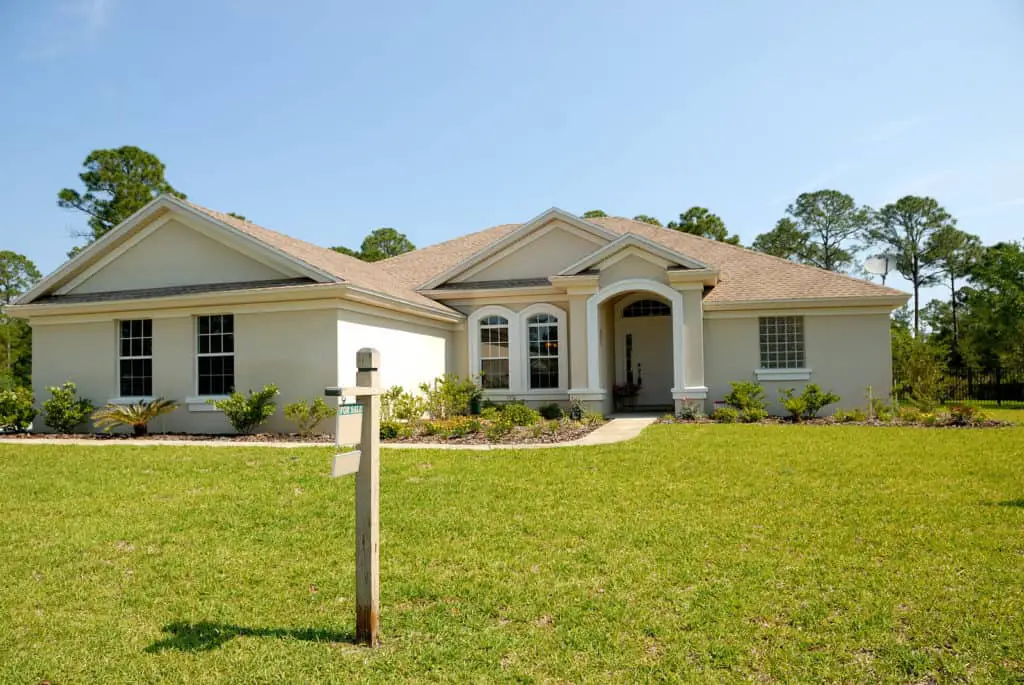
Retirement communities present an opportunity to earn income by targeting a growing niche market in the real estate sector. If you are of retirement age, you may have looked into retirement communities as a viable option for a part-time living arrangement. The sticker price may have you seeking out options to earn money on the side by renting out retirement community space that you are not using.
Can You Buy Property in Retirement Communities to Rent? You certainly can buy property in at least some retirement communities to rent. Renting out property in retirement communities comes with a few stipulations:
- There may be a minimum age requirement for property owners in the community.
- The by-laws of the community may prohibit renting out space.
- It may be difficult to attract enough tenants to get a return on your investment.
In this article, we will cover all of those issues and more. We have included resources you have at your disposal to maximize your earning potential if you do decide to invest in property within a retirement community. We have also included information regarding an investment opportunity for those who are not necessarily ready to commit to buying property, but who still want a piece of this burgeoning industry.
Who Can Buy Property In Retirement Communities?
There are limits on who can buy property in retirement communities. Most retirement communities have minimum age requirements. You may also be limited by the amount of money you have free to make such an investment.
Many retirement communities come with a wide assortment of amenities available to residents. These amenities help provide the community residents with an enjoyable experience in their golden years, but they also do come with a price tag in the form of membership or HOA fees.
In this section, we will take an in-depth look at the factors that can influence who can buy property in a retirement community to rent out.
Minimum Age Requirements For Buying Property In Retirement Communities
Properties in retirement communities are restrictive regarding who may live in them.
Most retirement communities stipulate that at least one individual living in the home must be 55 years or older.
This does not mean that the buyer of the property has to be 55 years or older. Applicants for properties in retirement communities may be younger than 55 years old if:
- There will be at least one (1) individual living in the home who is of the required age
- The person who lives in the home will likely need to also go through the application and acceptance
- If you consult with the association before buying property as an investor who is looking to flip it
Financial Requirements of Buying in a Retirement Community
The retirement community you are interested in buying a property in may have mandatory membership structures, like the one outlined here.
Additional Costs
When you are in the process of applying for a home in a retirement community, you should ask about additional costs besides just the upfront costs of the home.
Additional costs associated with the purchase of a home in a retirement community may include:
- Equity memberships: purchases of ownership stakes that are called equity memberships and the resale value of these memberships may be uncertain.
- Annual dues charged by the community may charge
- Trash removal and maintenance costs associated with the property
- A la carte services such as housekeeping, concierge services and laundry
- Recreational programs costs
- HOA community landscaping costs
Before you consider investing in property at a retirement community, consider all the long-term costs that may be associated with the property.

Why Put Down a Large Down Payment?
It can be advantageous to put down a large down payment on a retirement community property:
By putting down a larger down payment you can:
- Lower the monthly payment required towards a loan
- Not have to pay for private mortgage insurance
- Lower the interest rate on the loan
- Be more competitive in the lending market
You will have a larger variety of choices when it comes to lenders, meaning that you will be able to compete for a lower interest rate on the loan
How Do I Rent Out A Property In A Retirement Community?
It’s become trendy for owners to rent out homes, vacation cabins, and recreational vehicles as a bit of a side-hustle. Owners have collectively earned over $40 million from renting out spaces they own on the renting program Airbnb alone.
Airbnb estimates that the fastest-growing host demographic is those who are ages 60 and older. In fact, hosts belonging to this demographic are reported to be among the most successful hosts worldwide.
These stats give credence to the claim that renting out property in a retirement community can be a successful venture if you play your cards right.
Here are some steps to take to cash in on this potential investment opportunity:
- Ensure that the retirement community you’re interested in actually allows you to rent out the property. Many communities will prohibit such a venture. Make sure that you ask the property manager before you try to rent out space
- Make sure that you adhere to community minimum age requirements. In most communities at least one homeowner is at least 55 years of age or whatever the age requirement may be.
- The community may require a period of residency before you are able to rent out space. This is because retirement communities want to avoid having high rates of turnover within their communities.
- You may consider registering your rental space on a hosting site if you have been approved by the property manager to rent out space and if you are allowed to list that space online. Most sites have a search filter for “Senior Living” or “Senior Community.”
Senior Cohousing
One specific type of senior living community is Senior Cohousing. Cohousing communities consist of a small collection of homes all interconnected, sharing common space where residents can share meals, garden and do laundry.
Although independent living facilities provide opportunities for residents to connect with like-minded people, there is more of an emphasis on community and sharing space in cohousing operations.
Senior cohousing communities present a greater opportunity for residents to avoid the isolation, sometimes associated with aging in place or moving into an institutionalized facility.
This type of retirement community is still a relatively new concept, with just 13 senior cohousing communities officially registered with the Cohousing Association of the United States as of October 2018.
This is quite a jump from the estimated total of zero senior-specific cohousing opportunities available in 2010. And many more senior cohousing developments are in either the early stages of construction or the planning process.
Senior cohousing communities serve as a potential high-reward investment opportunity for those seeking a niche market.
One potential benefit that cohousing retirement communities may have over traditional retirement community set-ups is a lower rate of turnover among residents. Prospective residents may see cohousing communities as preferable when compared to traditional retirement mobile home villages that come with a plethora of amenities and resulting built-in fees.
It is highly recommended that you hire a management company familiar with senior communal housing before diving with both feet in as a real estate investor.
What Are The Advantages And Disadvantages Of Investing In Property In A Retirement Community?
There are several pros and cons associated with property investments in a retirement community. Here are the ones that top the list:
Pros
- Desirable locations at a relatively low cost: Retirement communities are often located in warm climates such as Florida or Arizona. Retirement communities may represent the most affordable option for people to have access to the property in such locations.
- Access To healthcare: Retirement communities also may be the most affordable options for people looking for places near hospitals, another potential selling point
- Current Population Demographics: There is a significant portion of the population in the running for property in a retirement community
- Fewer Maintenance Responsibilities: Retirement communities come with landscaping and maintenance covered by the HOA. The responsibility of someone maintaining their own yard and garden can be an arduous task.
- Recreational Opportunities: retirement communities may provide members with recreation facilities such as pools, gyms and golf courses
- A niche market: you won’t have to spend too much time figuring out who your target audience is since at least one co-applicant on the property will have to be an individual 55 years of age or older
Cons
- Fees: The amenities such as recreational opportunities, landscaping, and maintenance and location do not come free of cost. Residents do have to pay fees for these services.
- Limited opportunities to invest: It may not be easy to find a retirement property to invest in since they are more common in warmer climates or locations close to healthcare options
- Limited Buyer/Rental Pool: Although you will have direction in who you market the property too, you will also be limited to a relatively small pool of potential clientele depending upon the demographics of the area
- Association By-Laws: When you invest in a property within a retirement community you will be limited in the control you have over decisions such as how much you charge for rent, who you choose to be a tenant and what kind of maintenance you do on the property to attract potential tenants
Not all retirement communities are created equally. You will definitely want to “shop around” before you decide to commit to a piece of property in a retirement community.
In the section, we will point you in the direction of some resources you can utilize to find out more about the retirement communities you may be interested in.
Where Can I Compare Retirement Communities?
There a variety of resources available to you if you wish to make a side-by-side comparison of retirement communities in your area.
Ideal-Living (International)
This site serves as a directory to retirement communities in select states and international locations.
- The site seems to be a work in progress, providing information on retirement communities in just over 50% of the contiguous United States
- However, they do have mostly all of the Southern region covered
- If you click on the outline of a state or country such as the Dominican Republic on the site, you will be taken to:
- A map of the area you selected showing the plotted locations of retirement communities
- Click on the geographic markers of this community, and you will be taken to a page displaying information about the specific retirement community
- This resource is designed for those looking to narrow down potential retirement community choices to a select geographical area
- There’s a button on the individual community pages that will take you to the community web site
- There is also a button where you can request more information about the community
New LifeStyles
This site allows you to search for retirement communities by city, state, county, or zip code.
- You can also select how far of geographical range you want the search query to cover
- You can filter your search results by type of housing and care. One such option you have at your disposal is to filter communities out to show only “independent living” communities
- Clicking on a search result will take you to a page displaying the contact information for the community as well as the location of the community plotted on a map
Do Some Research
Before selecting a retirement community to invest in, you will want to be updated on industry trends. This book , authored by Chuck Durrett, will help you learn about what potential retirement community residents are looking for when they are in the process of shopping around for retirement property.
Relevant topics in the book include:
- The social aspect of retirement
communities.
- Retirement communities represent an opportunity for those who have become more isolated with age to connect with like-minded
- The wealth of recreational opportunities associated with retirement communities
- The security offered by retirement communities
- The affordability of communities
- Access to quick healthcare
Your Senior Housing Options
There are many different types of retirement communities with independent living being just one of the many options.
This book is authored by Diane Towhy Masson, who has guided many a retiree in their journey to find the housing that best fits their needs. Her clientele includes her own parents.
This book will inform you of what retirees and their families are looking for in a potential retirement community including sections on topics such as:
- The costs and consequences of amenities associated with retirement communities
- Navigating the glossary Of terms associated with picking a retirement community
Senior Housing Marketing
Also, Authored by Diane Towhy Masson, this book is a guide to marketing retirement communities, and increasing occupancy long-term. Masson looks into the variety of factors influencing the attractiveness of a retirement property in the eyes of the prospective buyer or tenant.
Included are sections on:
- Effective marketing strategies
- Reasons why occupancy may be down in some communities
- 12 keys for retirement community owners to “unlock the senior housing occupancy blockade.”
Are There Many People Investing In Retirement Communities?
It turns out that it is becoming popular for real estate investors to seek out property in retirement communities.
The CBRE U.S. Seniors Housing & Care Investor Investor Survey And Trends Report performed in the Summer of 2019 shows that:
- 62% of survey respondents anticipate increasing their real estate investment portfolios over the next 12 months
- The current age pyramid of the United States is favorable for investing in property at retirement communities. Baby Boomers are approaching their golden years and will be looking at retirement options.
- Occupancy rates, particularly for independent living retirement communities, remain high with the stabilized occupancy rate in primary market locations coming in at 91.3%.
Research performed by the Harvard Joint Center for Housing Studies shows that there has been a significant increase in the number of renters in recent years, particularly in the 50 to 60-year-old age group.
Senior Living REITs
If you are looking to hit pay dirt by investing in retirement communities, you may have an interest in a less hands-on approach than buying and renting out property in retirement communities. This is particularly the case if you can’t meet the homeowner age requirements set by many retirement communities.
You can invest in Senior Living Real Estate Investment Trusts(REITs):
- Real Estate Investment Trusts are companies that either own or finance income-producing real estate
- REITs usually pay out their taxable income in the form of dividends to their shareholders
- Shareholders pay income taxes on the dividends they accrue
- Before investing in niche Senior
Living REITs, you will need to do your homework:
- Learn who manages the company
- What is the business strategy of the company?
- Does the company’s track record suggest that it could grow as a company, delivering growing returns for its shareholders?
- Approach REITs as you would any other stock
You can research REITs on platforms such as Nadex, where you can make short-term trades without brokers and brokers fees.
